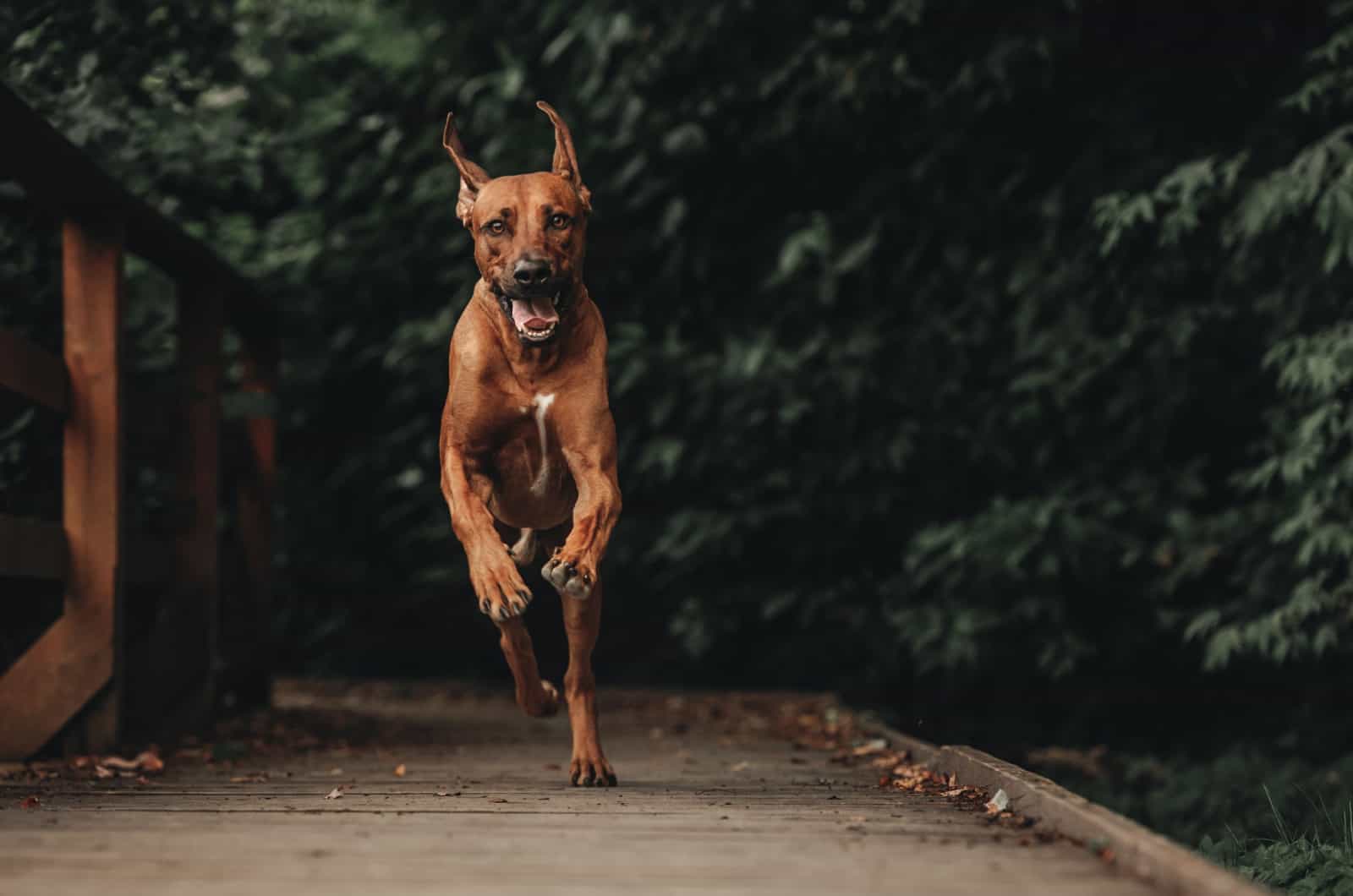So you got yourself a Rhodesian Ridgeback puppy? Now what? How do you feed it? No worries, help is on the way! This Rhodesian Ridgeback feeding chart will help you figure out how many calories to feed your puppy.
But, that’s not all! We will focus on everything there is to know about feeding your Rhodesian Ridgeback dog. So, as we mentioned, this Rhodesian Ridgeback feeding chart provides aspiring and current dog owners about what kind of food and the amount of food their pooch should eat.
Before diving into this feeding chart, it’s important to note that the Rhodesian Ridgeback dog falls under the large breed category which means that it will require quite an amount of food.
Follow this Rhodesian Ridgeback feeding chart to find out more!
Rhodesian Ridgeback Feeding Chart Preview
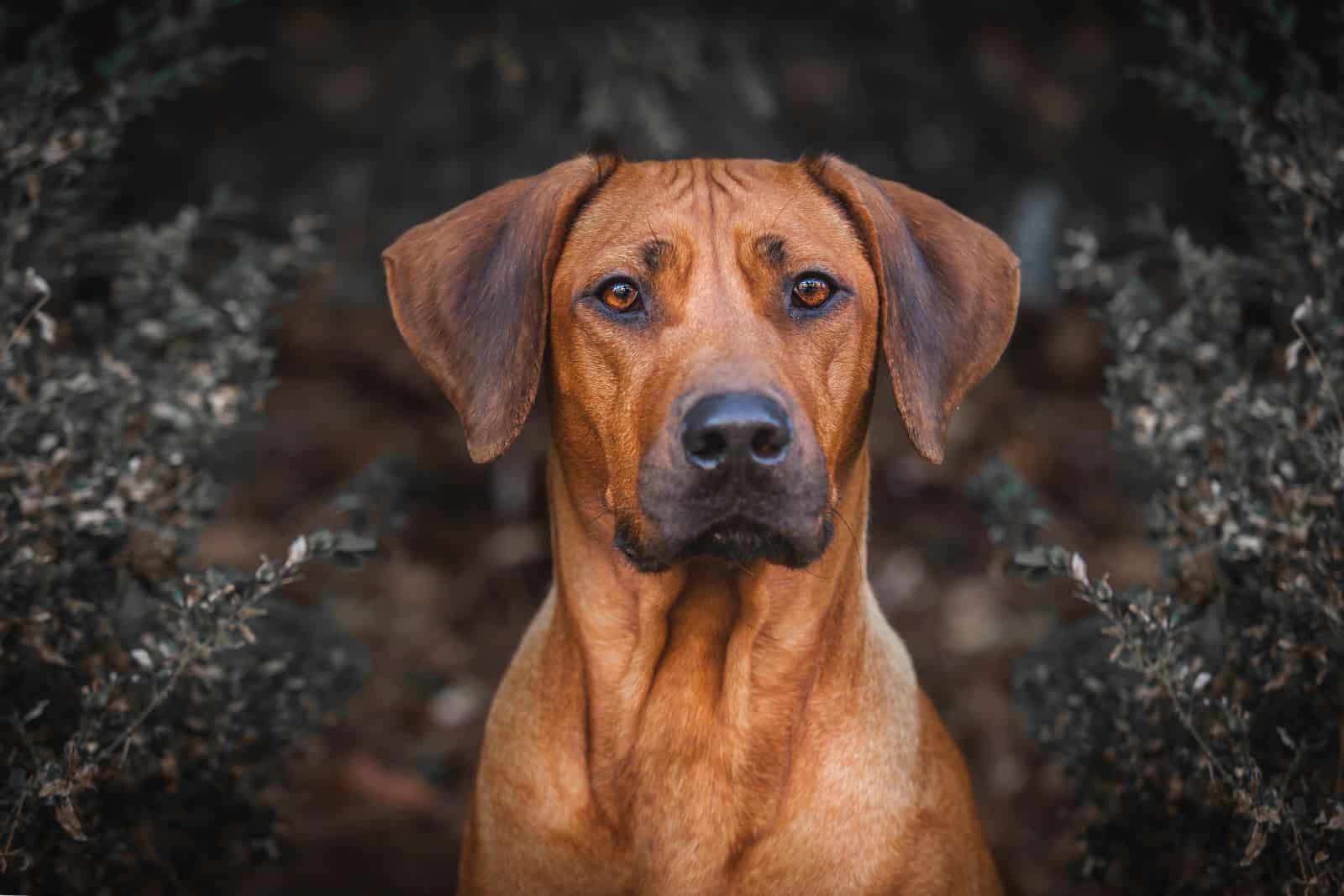
When it comes to adult Rhodesian Ridgeback dogs, males need more food than females because they grow bigger and taller. However, some female Rhodesian Ridgeback dogs will have a strong appetite, while some male Rhodesian Ridgeback dogs will be picky eaters.
This is why you should observe each dog individually, regardless of its gender.
Before making a feeding schedule and deciding on the amount of food, you should first weigh your Rhodesian Ridgeback puppy/adult dog.
Most feeding charts, including the Rhodesian Ridgeback feeding chart, are created according to your dog’s weight and size.
According to the Rhodesian Ridgeback growth chart, Male Rhodesian Ridgeback dogs range in height from 25 to 27 inches and weigh 85 pounds, whereas females grow from 24 to 26 inches and weigh up to 70 pounds.
[table id=529 /]
Most large breed dogs need a lot of food, but it is important to note that most large breed dogs are prone to obesity.
Keep in mind that your Rhodesian Ridgeback dog should never reach up to 100 pounds, this is considered a health problem. So, you have to find balance in your Rhodesian Ridgeback feeding schedule or you are in it for an obese dog.
Rhodesian Ridgeback Puppy Feeding Chart Preview
When it comes to Rhodesian Ridgeback puppies, their feeding schedule should be followed depending on their age. Rhodesian Ridgeback puppies need more nutritious food that helps them grow healthy.
During puppy development, owners should take special precautions regarding how and when they feed their Ridgeback pups.
Your Rhodesian Ridgeback puppy dog will be happy and full after you follow this Rhodesian Ridgeback puppy feeding chart:
[table id=530 /]
A Rhodesian Ridgeback puppy’s first few months of life are crucial for a successful start in life.
Most Rhodesian Ridgeback breeders will give you a feeding schedule to follow as well as a few days’ worths of the food the Rhodesian Ridgeback puppy is currently eating when you pick him up.
If you are unable to locate that specific puppy food, you should purchase high-quality puppy food and begin with the transition before your supply runs out.
For instance, if the Rhodesian Ridgeback puppy consumes one cup of puppy food per meal, you would substitute 1/4 of the new puppy food, 1/2 the following day, and so on until the puppy is completely accepting of the news feed.
How Often Should I Feed My Rhodesian Ridgeback Puppy?
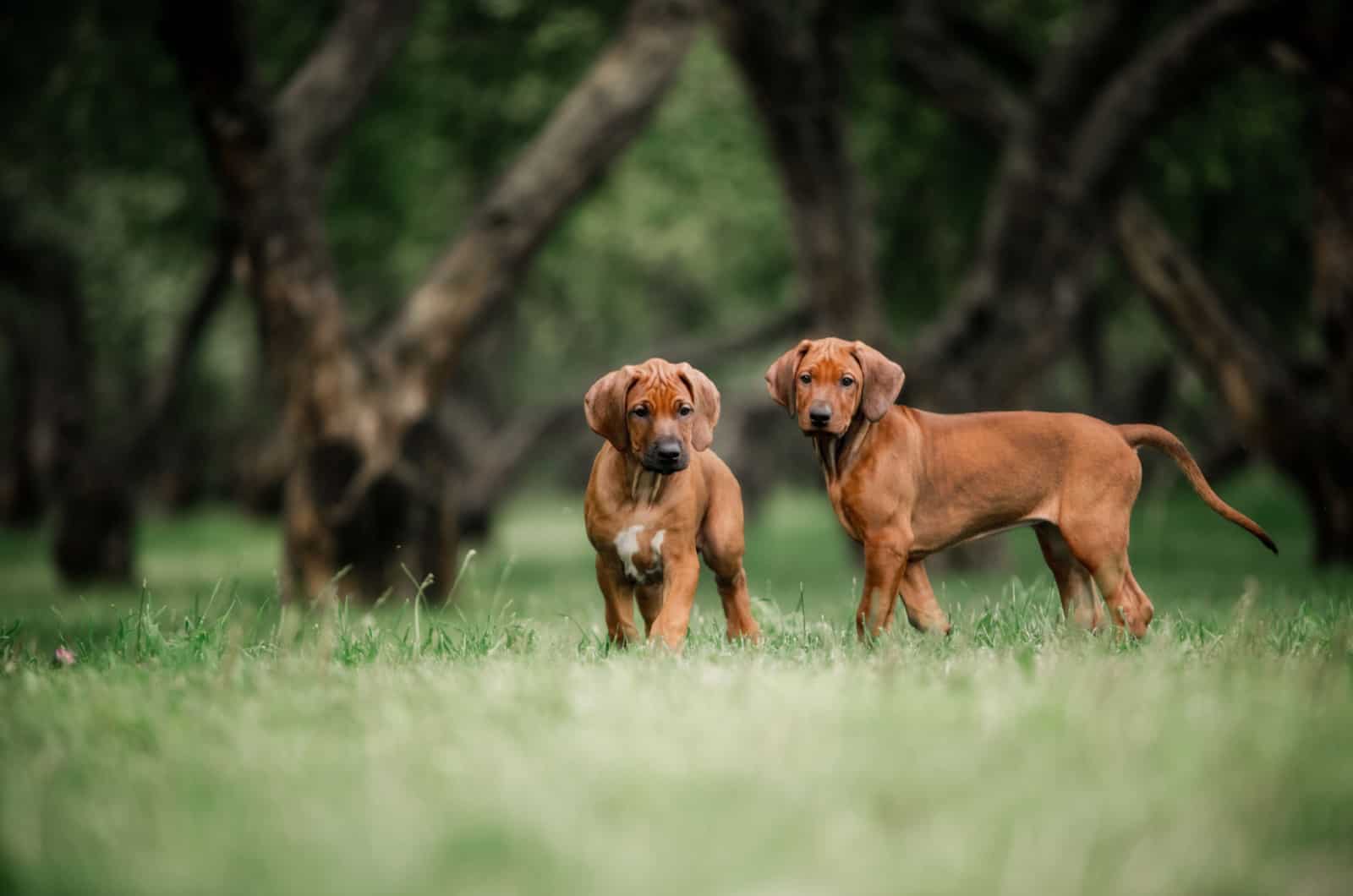
Rhodesian Ridgeback puppy dogs already weigh around 28 pounds at eight weeks old when they are ready to meet their new family. Before getting adopted, it is advisable that the Rhodesian Ridgeback puppy receives its vaccination and deworming treatments.
The majority of aspiring and new Rhodesian Ridgeback dog owners wonder how often they should feed their puppy to avoid potential health problems during its development.
While there is no rule of thumb when it comes to a feeding schedule, most Rhodesian Ridgeback puppies should be fed three smaller meals per day.
If some Rhodesian Ridgeback puppies have bigger appetites, you can separate three small meals into four smaller meals.
Simply give your Rhodesian Ridgeback puppy a smaller amount of food daily. Avoid giving young puppies a lot of dog treats.
Of course, you will use yummy treats during training, but don’t overdo it because dog treats are high in calories and your Rhodesian Ridgeback puppy can slowly start getting more fat.
What Do Rhodesian Ridgeback Puppies Eat?
When they are born, Rhodesian Ridgeback puppies’ main food source (and calcium source!) is their mother’s milk. So, until their teeth start to emerge (at three weeks old), they will keep nursing. The majority of Rhodesian Ridgeback puppies nurse until six weeks of age. But this period is individual because not all canine mothers wean their puppies at a specific timeframe.
After weaning, Rhodesian Ridgeback puppies start to eat puppy food. This happens around seven weeks of age when breeders start introducing their puppies to puppy food. The transition period is slow, as it should be because nobody wants to upset a Rhodesian Ridgeback puppy’s stomach!
Therefore, reputable breeders and owners take matters into their own hands and create puppy mush. They simply mix a bit of water with dry puppy food and make a mush out of it.
As days go by and Rhodesian Ridgeback puppies get used to the puppy mush, breeders start gradually adding less water until their puppies are eating completely dry puppy food.
Rhodesian Ridgeback puppies can start eating raw food as soon as eight weeks old, but many breeders and veterinarians recommend that they start when they reach 10 weeks of age.
How Much Should I Feed My Rhodesian Ridgeback?
The amount of food your Rhodesian Ridgeback adult dog consumes is influenced by its size, age, condition, constitution, metabolism, and activity levels.
2 3/4 to 4 3/8 cups of high-quality food per day, split into two meals, is the suggested daily intake.
Avoid feeding your Rhodesian Ridgeback dog a large meal before playtime. Immediate physical activity after a meal can cause your Rhodesian Ridgeback dog to develop acute canine bloat which is a life-threatening condition.
What Is The Best Food To Feed A Rhodesian Ridgeback?
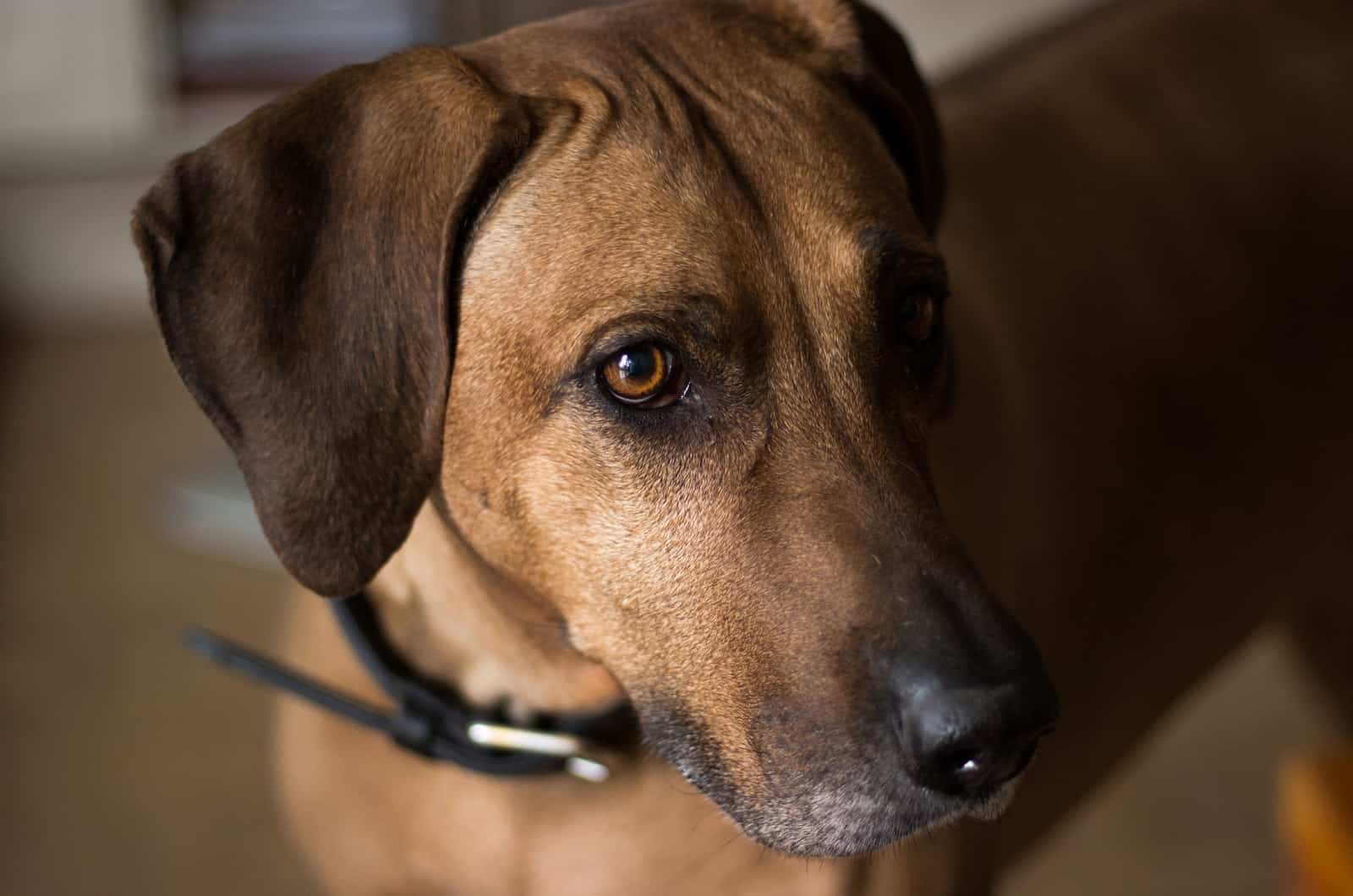
Your Rhodesian Ridgeback dog’s diet should consist of high-quality protein, carbohydrates, minerals, vitamins, and fatty acids.
This means that your Rhodesian Ridgeback dog should consume high-quality dog food that is packed with omega-3 and omega-6 fatty acids.
If you think Rhodesian Ridgeback colors are vivid and beautiful, wait until you see how shiny they become after your dog is put on a high-quality diet!
Puppy Food
One of the most important things in your Rhodesian Ridgeback puppyhood is a high-quality puppy food. Young puppies are extremely vulnerable to external factors and changes in their diet.
Rhodesian Ridgeback puppies are large breed puppies that are more prone to bloat than other dog breeds. So, it is very important to choose wisely what kind of puppy food you’re going to feed your Rhodesian Ridgeback puppy.
Rhodesian Ridgeback puppies are given everything they require in puppy food to help them develop into healthy, content adult dogs.
The occasional serving of adult dog food won’t be harmful to their health, even though they need to eat puppy food regularly. By 12 months of age, most Rhodesian Ridgeback puppies will have already transitioned to adult food.
Dry Dog Food
For the majority of dog owners, dry dog food is significantly more practical and affordable. If left outside, the food will not go bad since only 10% of dry dog food is water.
Because there is more food per pound when there is less water, your Rhodesian Ridgeback dog will have more energy.
The Rhodesian Ridgeback is a large dog that requires more energy to function than any other small dog. Its diet should consist entirely (or primarily) of dry dog food.
Dry dog food has a high grain content, which helps keep it fresh for longer periods.
Grain-Free Dog Food
No corn, rice, wheat, or other grains are found on the ingredients list of this type of dog food.
While a grain-free dog food diet has lots of advantages, it may not be nutritious enough for your growing Rhodesian Ridgeback dog. If you are going to feed your Rhodesian Ridgeback dog grain-free dog food, make sure to consult a veterinarian or a veterinary nutritionist.
Carbohydrates are still required by dogs for energy. Even the American Kennel Club states that good dog food does contain grains.
Grain allergies in dogs are extremely rare, affecting less than 1% of all dogs.
Raw Food Diet
Raw dog food is a way to go for your large Rhodesian Ridgeback dog breeds. Fresh meat is easy to digest and provides lots of benefits for your Rhodesian Ridgeback’s skin, coat, and bones.
Another great advantage of a raw food diet is that it is 100% natural — it does not contain any artificial colors, fillers, and little to no carbohydrates.
These combine to power an opulent coat. Feeding raw meat on the bone to your dog is not only safe but essential.
There is no denying that the Rhodesian Ridgeback dog breed is adaptable, and despite eating a diet that may be deficient in natural ingredients (such as kibble) they will do so for a while.
Rhodesian Ridgeback’s digestive system does not break down carbohydrates easily. And carbs are the main ingredient in many commercial dog foods (kibble and wet food).
Even kibble made without grains frequently has a lot of legumes, peas, and lentils, which are high in starchy carbohydrates.
This puts a dog’s system under stress, causing metabolically stressful spikes in insulin, glucagon, and cortisol throughout the day. It also causes inflammation and stresses vital organs, which can, in some cases, result in several serious health conditions.
Supplements
If your Rhodesian Ridgeback dogs are fed a proper commercial diet, they shouldn’t need vitamin supplements unless their veterinarian specifically advises them to.
On the other hand, Rhodesian Ridgeback dogs that are fed a full homemade diet might need a few supplements just in case. This is simply to ensure that their large bodies get enough vitamins with each meal.
Supplements like DHA and chondroitin are great for large breed dogs that suffer from hip and elbow dysplasia, as well as other skeletal issues.
Moreover, vitamin supplements like AD3E vitamins are great for Rhodesian Ridgeback dogs that suffer from a congenital skin condition that is called Dermoid Sinus.
However, most supplements are given to Rhodesian Ridgeback dogs for therapeutic purposes.
What Are Some Foods I Can Feed My Rhodesian Ridgeback?
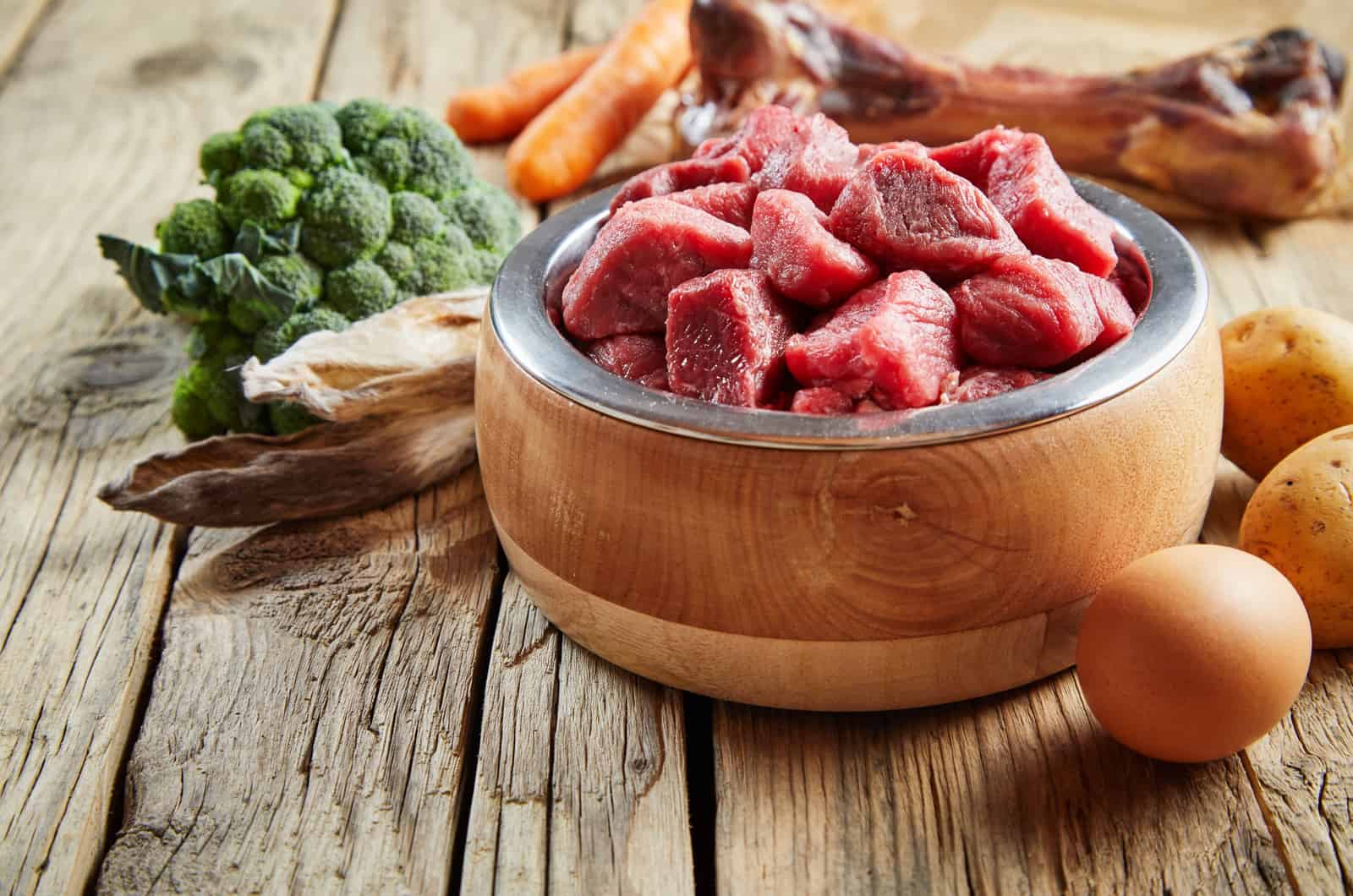
If you are thinking about feeding your Rhodesian Ridgeback dog some human food, then I recommend you go for it!
However, before feeding your Rhodesian Ridgeback dog human food, you need to do a lot of research.
Here are some yummy examples of human foods that are completely safe for your large Rhodesian Ridgeback dog.
Meat
Beef, pork, turkey, lamb, chicken, and fish are all safe foods for Rhodesian Ridgeback dogs.
When feeding your Rhodesian Ridgeback dog, meat should always be the first ingredient and priority. You can boil some chicken for your Rhodesian Ridgeback puppy or adult dog, but make sure to get rid of cooked bones because they are brittle and can cause blockage in your dog’s esophagus.
Avoid giving your Rhodesian Ridgeback dog fatty meat like bacon and tenderloin.
Don’t even think about giving your Rhodesian Ridgeback deep-fried foods! Deep-fried stuff might be tasty for both humans and dogs, but we all know that it is unhealthy.
Spicy food and seasoned meat are also a no-no for your Rhodesian Ridgeback pal. Moreover, processed meat like Vienna sausages, salami, and spam is bad for your Rhodesian Ridgeback dog.
Besides a fully raw food diet, you can also try feeding your Rhodesian Ridgeback dog a BARF diet that consists of raw fruit and vegetables too.
But, be aware that there are some fruits and veggies that are forbidden for the Rhodesian Ridgeback breed, as well as other dog breeds.
Veggies
As we previously mentioned, spicy food is a huge no, and this also includes jalapeno peppers as well as Japanese horseradish and bell peppers.
There are plenty of vegetables that your Rhodesian Ridgeback dog is allowed to eat:
• Carrots
• Kale
• Spinach
• Celery
• Squash
• Broccoli
• Green beans
• Cucumber
When it comes to other veggies like brussels sprouts, these little cabbages can give your dog the farts.
Green veggies and grass can change the Rhodesian Ridgeback dog’s poop color, so don’t freak out if you see green feces!
Fruit
Rhodesian Ridgebacks that are not picky eaters love to munch on some healthy fruits!
Here are some safe fruits for your puppy to eat:
• Bananas
• Apples (without seeds)
• Watermelon
• Strawberry
• Blueberry
• Raspberry
• Papaya
• Pear
• Mango
Avoid at all costs giving your Rhodesian Ridgeback dog fruit with a pit in it such as peach, avocado, grapes, cherries, and plums.
Be aware that some of these safe fruits can make your dog poop instantly, especially if it is not used to eating them.
Dairy
Most Rhodesian Ridgeback dogs can safely consume small amounts of milk and plain yogurt (Greek yogurt is the best choice).
Dairy products like blue cheese can cause your Rhodesian Ridgeback dog to gain some excess weight.
Whipped cream for example can contain sweeteners (sugar) that are bad for any dog, especially a large breed puppy such as the Rhodesian Ridgeback.
Sour cream on the other hand is okay for your Ridgeback puppy. It is not toxic, but it is not high in nutrients. Sour cream can be a good treat if your Rhodesian Ridgeback likes it.
However, some Rhodesian Ridgeback dogs, like many people, cannot tolerate lactose.
If your Rhodesian Ridgeback dog can consume dairy, consider making some homemade dog treats with cheese or incorporating yogurt into your dog’s regular kibble to improve digestion.
As always, consult your veterinarian if you are unsure of what is safe to feed your pet.
Conclusion
Hopefully, this Rhodesian Ridgeback feeding chart helped you figure out the amount of food your Rhodesian Ridgeback puppy needs to grow into a beautiful adult dog.
This dog breed is very unique and requires a unique diet and feeding schedule. This is why a Rhodesian Ridgeback feeding chart like this one makes it easier for new owners to understand how much food their dog needs.
Reading dog food labels is a great way to start choosing the best food for your Rhodesian Ridgeback dog. All it takes is a bit of research and some good will!
After proper diet comes proper socialization and training. Trust me, your Rhodesian Ridgeback dog will thank you and it will live a healthy and happy life!
Related Content
Kindfull Dog Food Review: A Closer Look At Affordable Pet Food
7 Vet Approved Homemade Dog Food Recipes For Kidney Disease
How Much Raw Food To Feed A Puppy—Everything You Need to Know
